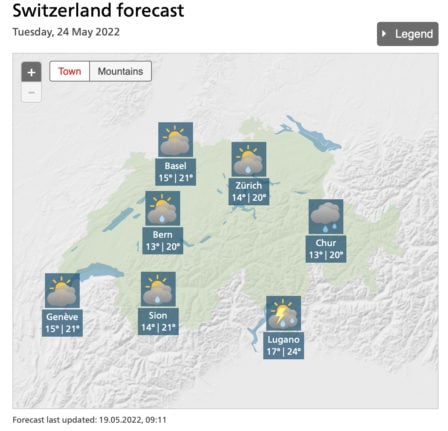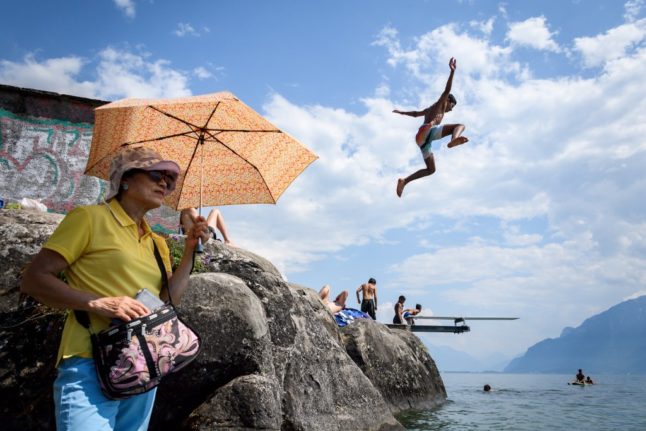The temps have reached high 20s across much of Switzerland in the past days, but the best (or the worst, depending on who you ask) is yet to come: meteorologists forecast the high of 32 degrees for Friday.
“The current heat wave is relatively extreme for a month of May”, meteorologist Joshua Gehring from official weather service MeteoSwiss said in an interview with Watson news platform.
Why is it so unseasonably hot right now?
One reason should come as no surprise to anyone: “What we are currently experiencing, that is to say a relatively early heat wave, is a direct consequence of climate change”, Gehring noted.
READ MORE: EXPLAINED: How the climate crisis is hitting Europe hard
Specifically, a phenomenon called “heat dome” is hovering over Europe. It is, according to Gehring, “a stagnant anticyclone that acts as a lid to accumulate and retain heat”.
This is pretty much what happens when you put a lid over a boiling pot — the heat therein is captured and can’t escape.
What can we expect for next week?
The forecast calls for the heat wave to end from the beginning of next week, with more seasonal, 20-degree-plus temperatures expected throughout the country.
This is what the forecast looks like for Tuesday:

MeteoSwiss screenshot
What can you do in the meantime to cool down?
Indoor air-conditioning is rare in Switzerland, but keeping cool is easier outdoors.
For instance, the abundance of lakes and rivers in Switzerland provides a welcome relief on hot days.
And if you like swimming pools, the good news is (at least during a heat wave) that some are turning off heating to boycott Russian gas, so you could have a nice, cool swim.
READ MORE: Swiss pools go cold in boycott of Russian gas
Also, most public fountains in Switzerland spout cold water you can drink and splash yourself with.
If all else falls, head for the glaciers (while they last).




 Please whitelist us to continue reading.
Please whitelist us to continue reading.
Member comments